Effect of Cu2+ on the Activation to Muscovite Using Electrochemical Pretreatment
Abstract
1. Introduction
2. Materials and Methods
2.1. Materials and Reagents
2.2. Methods
2.2.1. Electrolysis Experiment
2.2.2. Micro-Flotation Tests
2.2.3. Zeta Potential Characterization
2.2.4. FTIR Spectroscopy Characterization
2.2.5. XPS Measurements
3. Results and Discussion
3.1. Influence of Cu2+ on Flotation Behavior of Muscovite without Electrochemical Pretreatment
3.2. Effects of Electrochemical Pretreatment for Cu2+on Flotation Behavior of Muscovite under Distinct Conditions
3.3. Effect Mechanism of Electrochemical Pretreatment of Cu2+ on Flotation Behavior of Muscovite
3.4. Zeta Potential Effect of Cu2+ on Muscovite Surface under Different Electrochemical Pretreatment Conditions
3.5. Infrared Spectrum Analysis of Muscovite Samples
3.6. XPS Analysis of Muscovite Samples
4. Conclusions
Author Contributions
Funding
Conflicts of Interest
References
- Wang, D.; Jiao, F.; Qin, W.; Wang, X. Effect of surface oxidation on the flotation separation of chalcopyrite and galena using sodium humate as depressant. Sep. Sci. Technol. 2018, 53, 961–972. [Google Scholar] [CrossRef]
- Bas, A.D.; Larachi, F. The effect of flotation collectors on the electrochemical dissolution of gold during cyanidation. Miner. Eng. 2019, 130, 48–56. [Google Scholar] [CrossRef]
- Moslemi, H.; Gharabaghi, M. A review on electrochemical behavior of pyrite in the froth flotation process. J. Ind. Eng. Chem. 2017, 47, 1–18. [Google Scholar] [CrossRef]
- Kim, H.; You, J.; Gomez-Flores, A.; Solongo, S.K.; Hwang, G.; Zhao, H.B.; Lee, B.C.; Choi, J. Malachite flotation using carbon black nanoparticles as collectors: Negative impact of suspended nanoparticle aggregates. Miner. Eng. 2019, 137, 19–26. [Google Scholar] [CrossRef]
- Ahmadi, A.; Schaffie, M.; Manafi, Z.; Ranjbar, M. Electrochemical bioleaching of high grade chalcopyrite flotation concentrates in a stirred bioreactor. Hydrometallurgy 2010, 104, 99–105. [Google Scholar] [CrossRef]
- Chander, S.; Fuerstenau, D.W. Electrochemical flotation separation of chalcocite from molybdenite. Int. J. Miner. Process. 1983, 10, 89–94. [Google Scholar] [CrossRef]
- Meng, X.Y.; Zhao, H.B.; Sun, M.L.; Zhang, Y.S.; Zhang, Y.J.; Lv, X.; Kim, H.; Vainshtein, M.; Wang, S.; Qiu, G.Z. The role of cupric ions in the oxidative dissolution process of marmatite: A dependence on Cu2+ concentration. Sci. Total Environ. 2019, 675, 213–223. [Google Scholar] [CrossRef]
- Smith, L.K.; Bruckard, W.J. The separation of arsenic from copper in a Northparkes copper–gold ore using controlled-potential flotation. Int. J. Miner. Process. 2007, 84, 15–24. [Google Scholar] [CrossRef]
- Plackowski, C.; Bruckard, W.J.; Nguyen, A.V. Surface characterisation, collector adsorption and flotation response of enargite in a redox potential controlled environment. Miner. Eng. 2014, 65, 61–73. [Google Scholar] [CrossRef]
- Zhou, G.Y.; Li, W.J.; Chen, Y.; Song, Y.S. Study on Recovery of Lead-Zinc Tailing Ore by Electrochemical Flotation. Appl. Mech. Mater. 2014, 675–677, 1451–1454. [Google Scholar] [CrossRef]
- Quan, L. Electrochemical Flotation Separation of Marmatite from Pyrrhotite in the Presence of Copper Ion. Trans. Nonferrous Met. Soc. China 2000, 10, 90–92. [Google Scholar]
- Xiao, W.; Zhao, Y.; Yang, J.; Ren, Y.; Yang, W.; Huang, X.; Zhang, L. Effect of Sodium Oleate on the Adsorption Morphology and Mechanism of Nanobubbles on the Mica Surface. Langmuir 2019, 35, 9239–9245. [Google Scholar] [CrossRef] [PubMed]
- Xiao, W.; Ren, Y.; Yang, J.; Cao, P.; Wang, J.; Qin, W.; Qiu, G. Adsorption mechanism of sodium oleate and styryl phosphonic acid on rutile and amphibole surfaces. Trans. Nonferrous Met. Soc. China 2019, 29, 1939–1947. [Google Scholar] [CrossRef]
- Huang, X.; Zhu, T.; Duan, W.; Liang, S.; Li, G.; Xiao, W. Comparative studies on catalytic mechanisms for natural chalcopyrite-induced Fenton oxidation: Effect of chalcopyrite type. J. Hazard. Mater. 2020, 381, 120998. [Google Scholar] [CrossRef] [PubMed]
- Chimonyo, W.; Wiese, J.; Corin, K.; O’Connor, C. The use of oxidising agents for control of electrochemical potential in flotation. Miner. Eng. 2017, 109, 135–143. [Google Scholar] [CrossRef]
- Zhang, Y.; Zhao, H.; Zhang, Y.; Liu, H.; Yin, H.; Deng, J.; Qiu, G. Interaction mechanism between marmatite and chalcocite in acidic (microbial) environments. Hydrometallurgy 2020, 191, 105217. [Google Scholar] [CrossRef]
- Woods, R. Electrochemical potential controlling flotation. Int. J. Miner. Process. 2003, 72, 151–162. [Google Scholar] [CrossRef]
- Xiao, W.; Jiao, F.; Zhao, H.B.; Qin, W.Q.; Qiu, G.Z.; Wang, J. Adsorption Structure and Mechanism of Styryl Phosphoric Acid at the Rutile-Water Interface. Minerals 2018, 8, 360. [Google Scholar] [CrossRef]
- Wang, H.; Wen, S.M.; Han, G.; Feng, Q.C. Effect of copper ions on surface properties of ZnSO4-depressed sphalerite and its response to flotation. Sep. Purif. Technol. 2019, 228, 9. [Google Scholar] [CrossRef]
- Liu, W.; Zhang, J.; Wang, W.; Deng, J.; Chen, B.; Yan, W.; Xiong, S.; Huang, Y.; Liu, J. Flotation behaviors of ilmenite, titanaugite, and forsterite using sodium oleate as the collector. Miner. Eng. 2015, 72, 1–9. [Google Scholar] [CrossRef]
- Meng, Q.; Feng, Q.; Ou, L. Effect of temperature on floatability and adsorption behavior of fine wolframite with sodium oleate. J. Cent. South Univ. 2018, 25, 1582–1589. [Google Scholar] [CrossRef]
- Li, F.; Zhong, H.; Wang, S.; Liu, G. The activation mechanism of Cu(II) to ilmenite and subsequent flotation response to α-hydroxyoctyl phosphinic acid. J. Ind. Eng. Chem. 2016, 37, 123–130. [Google Scholar] [CrossRef]
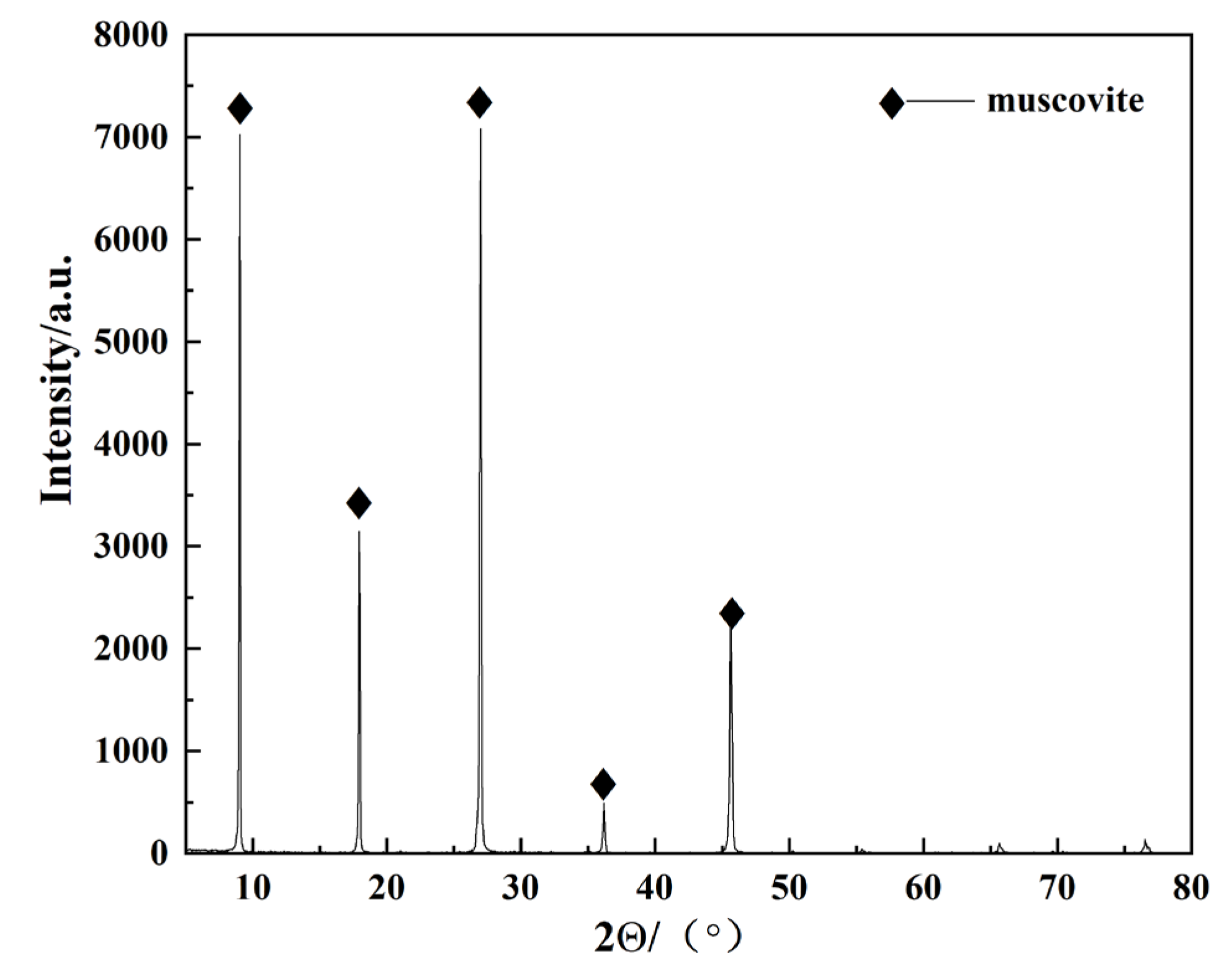
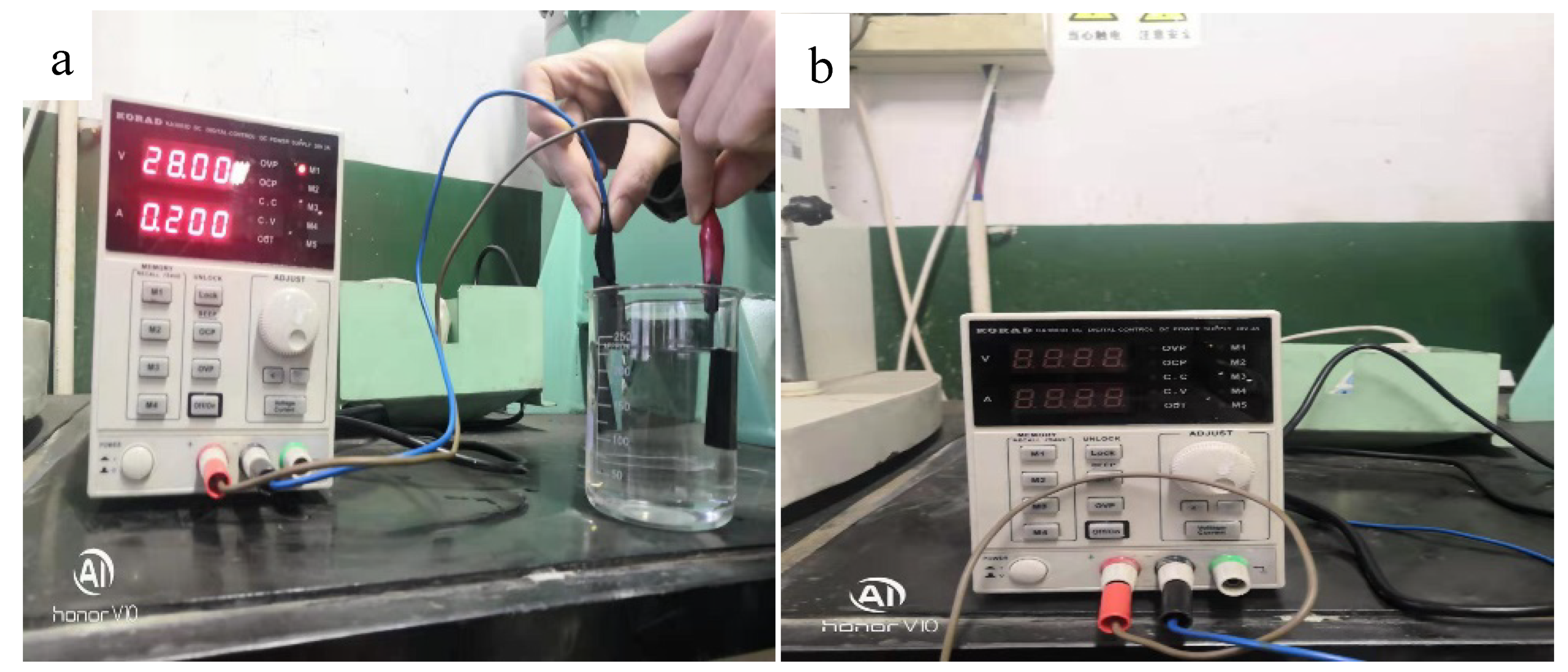
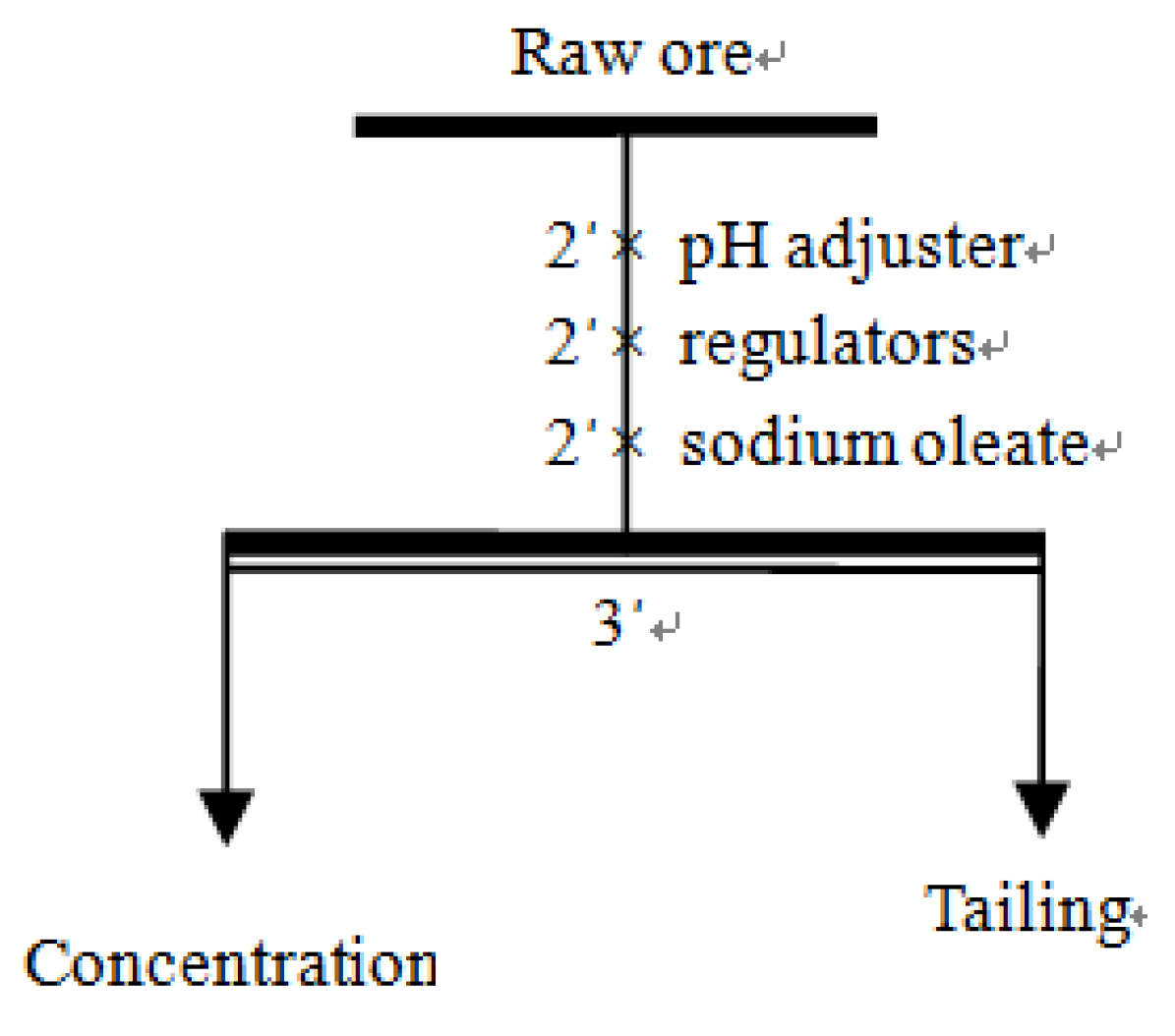
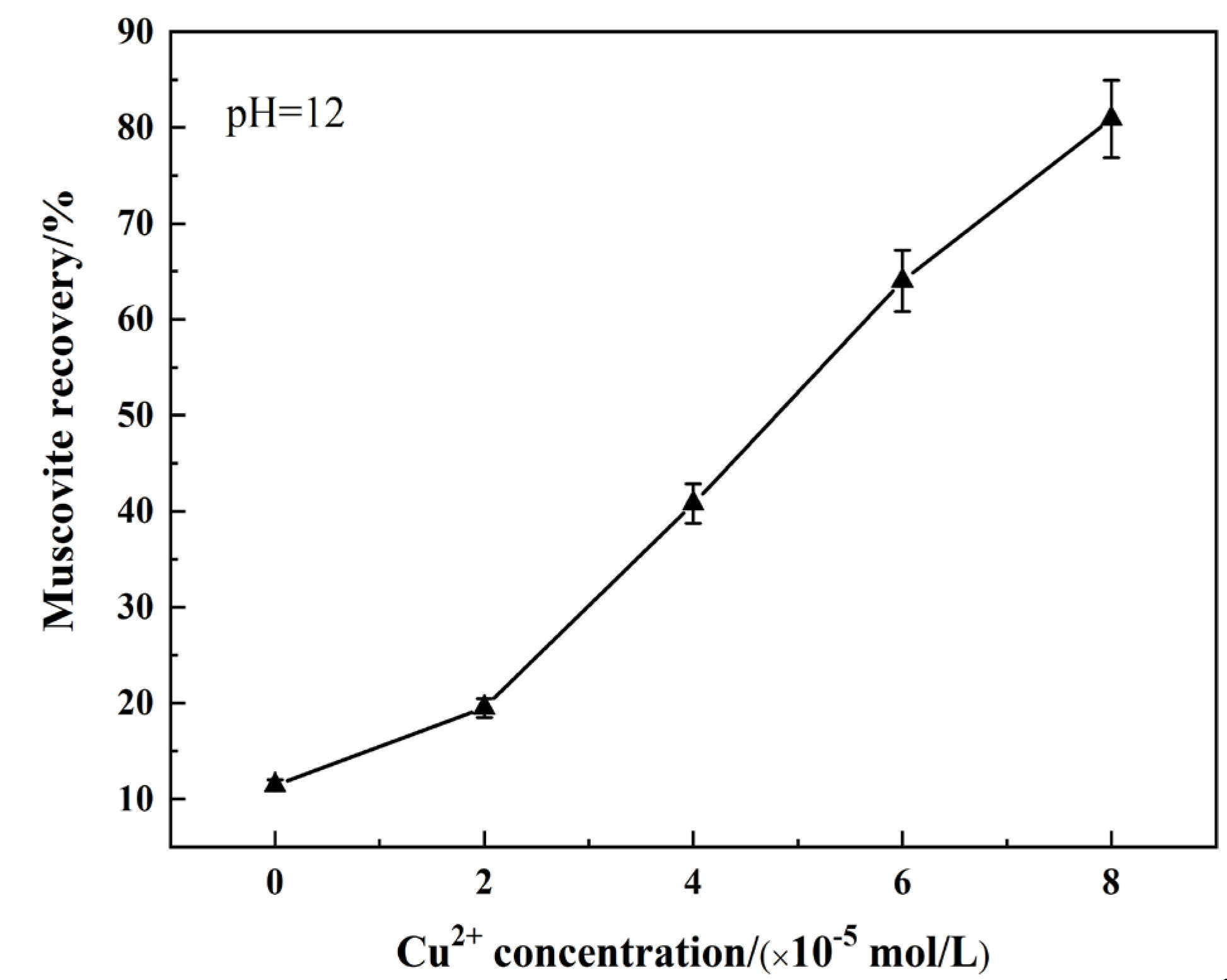
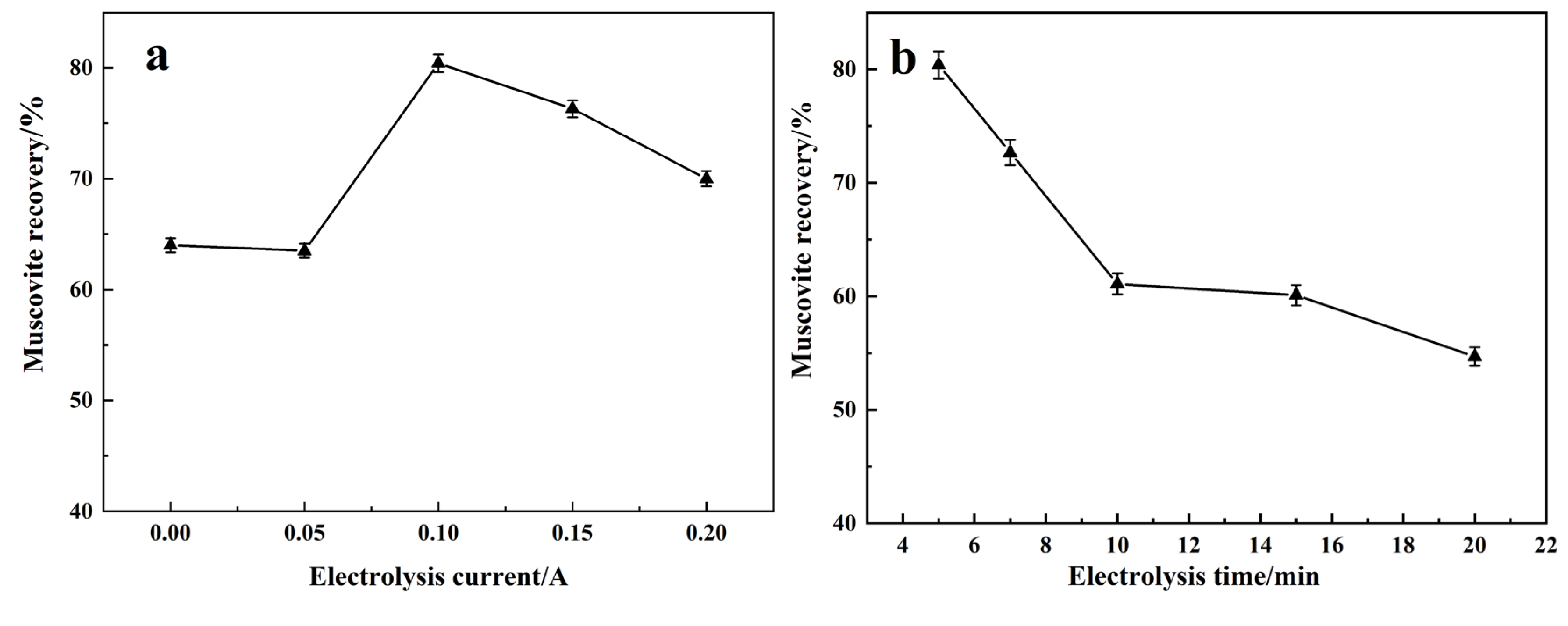
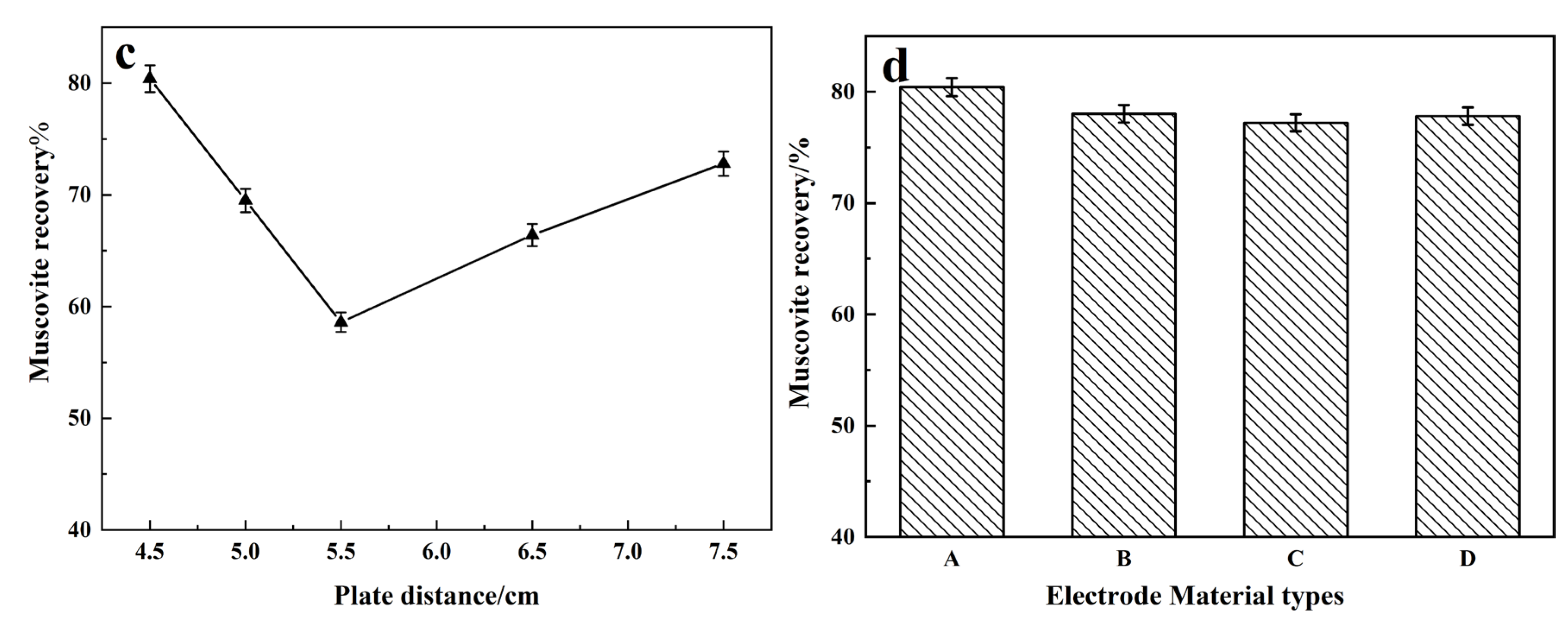
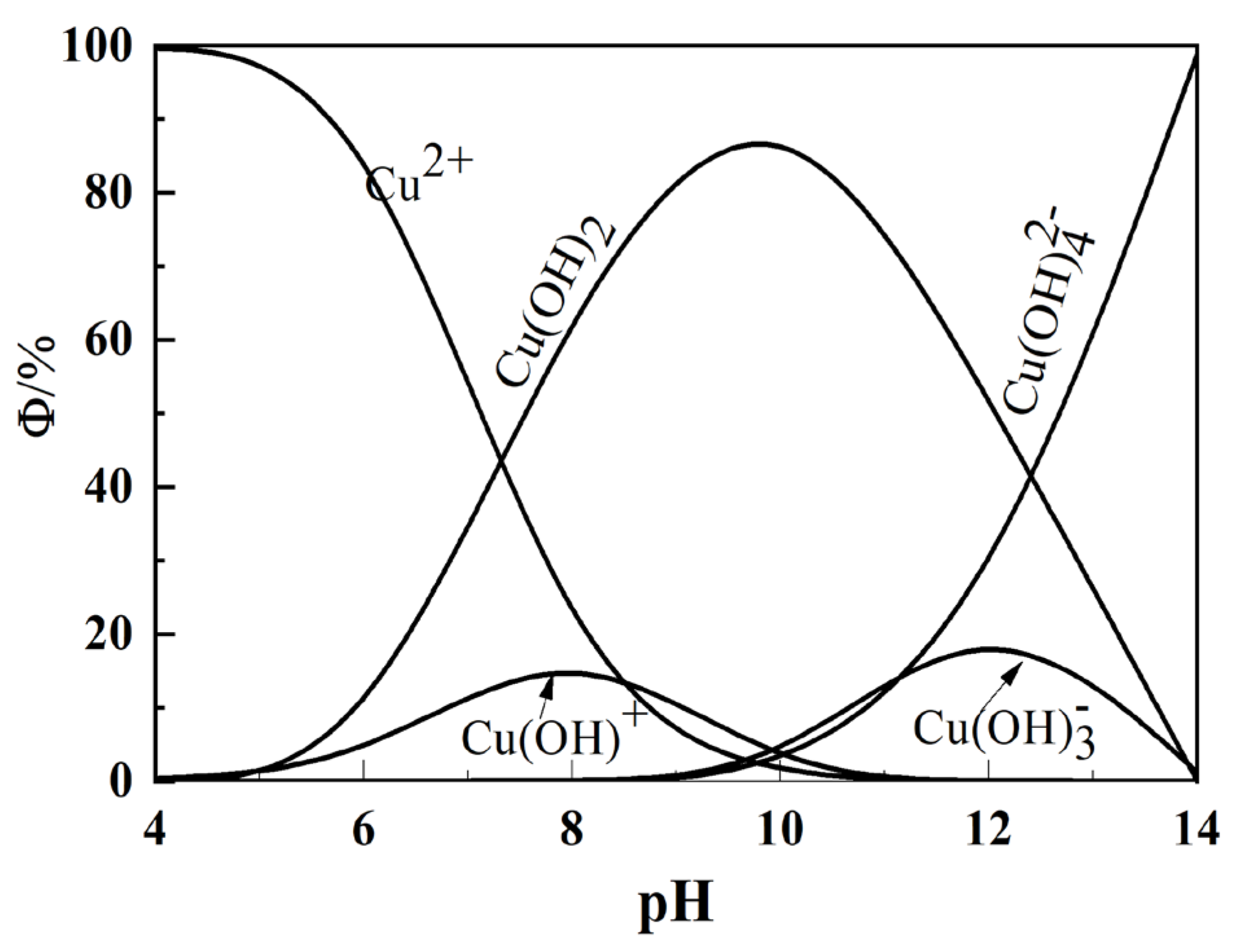
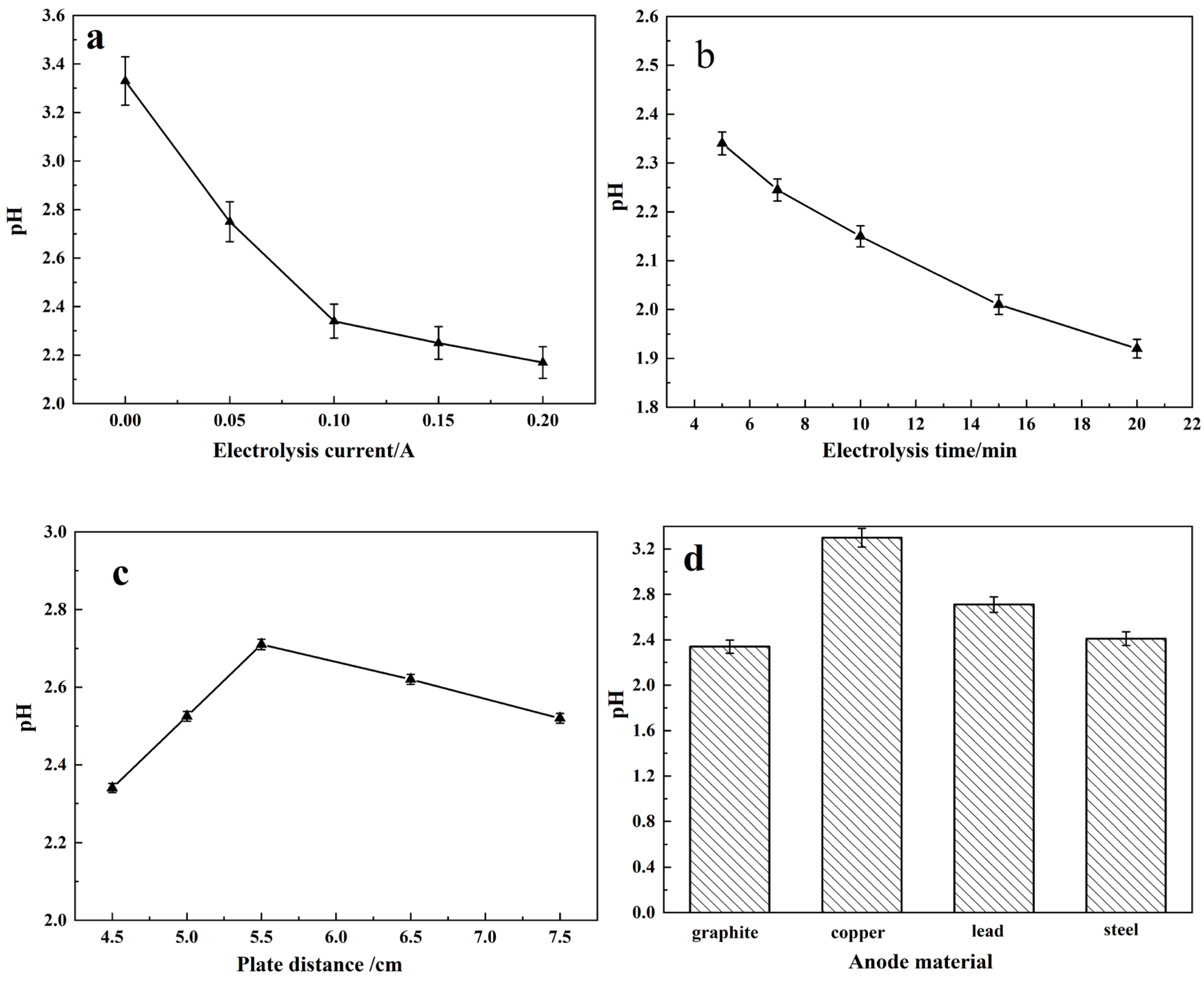

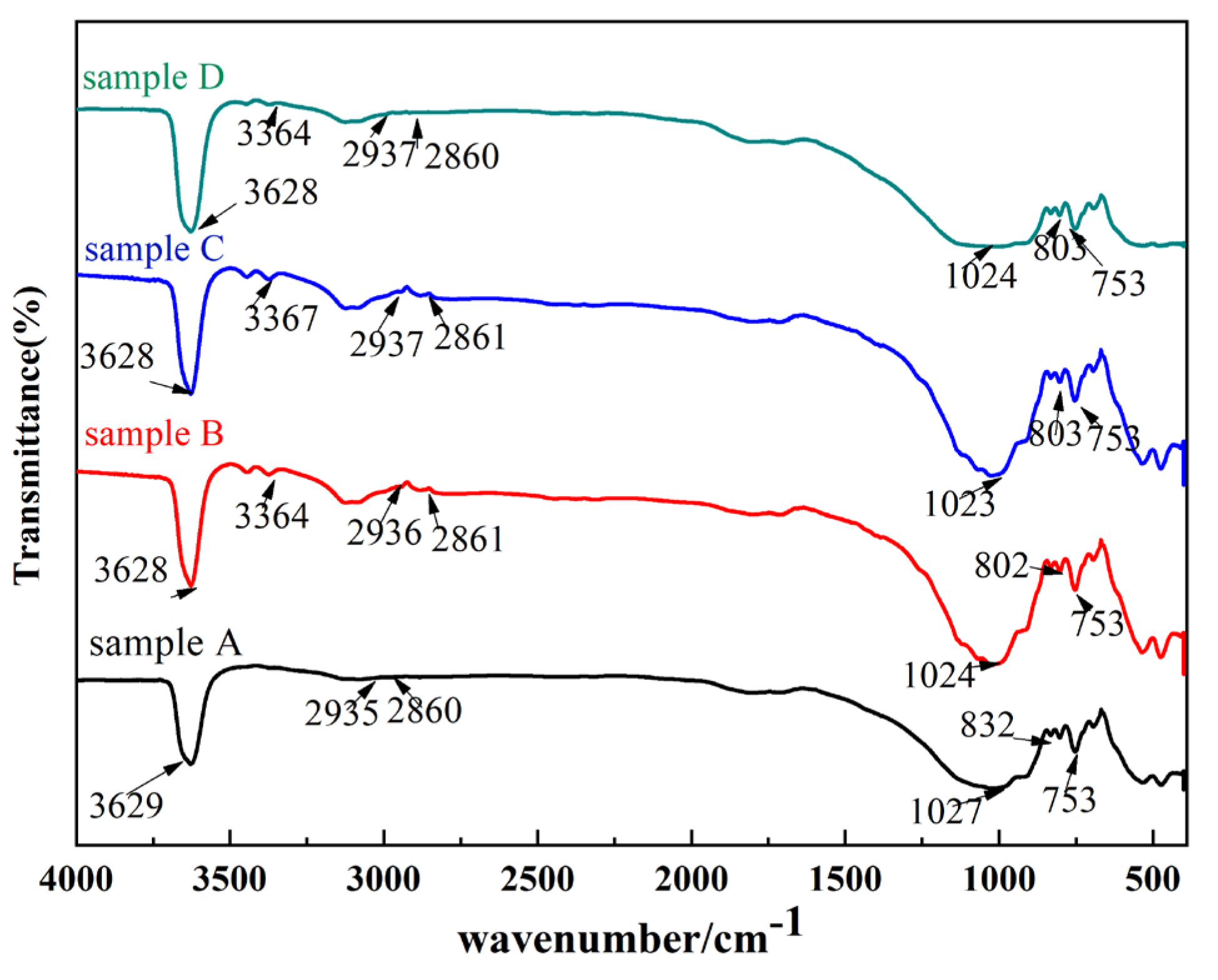
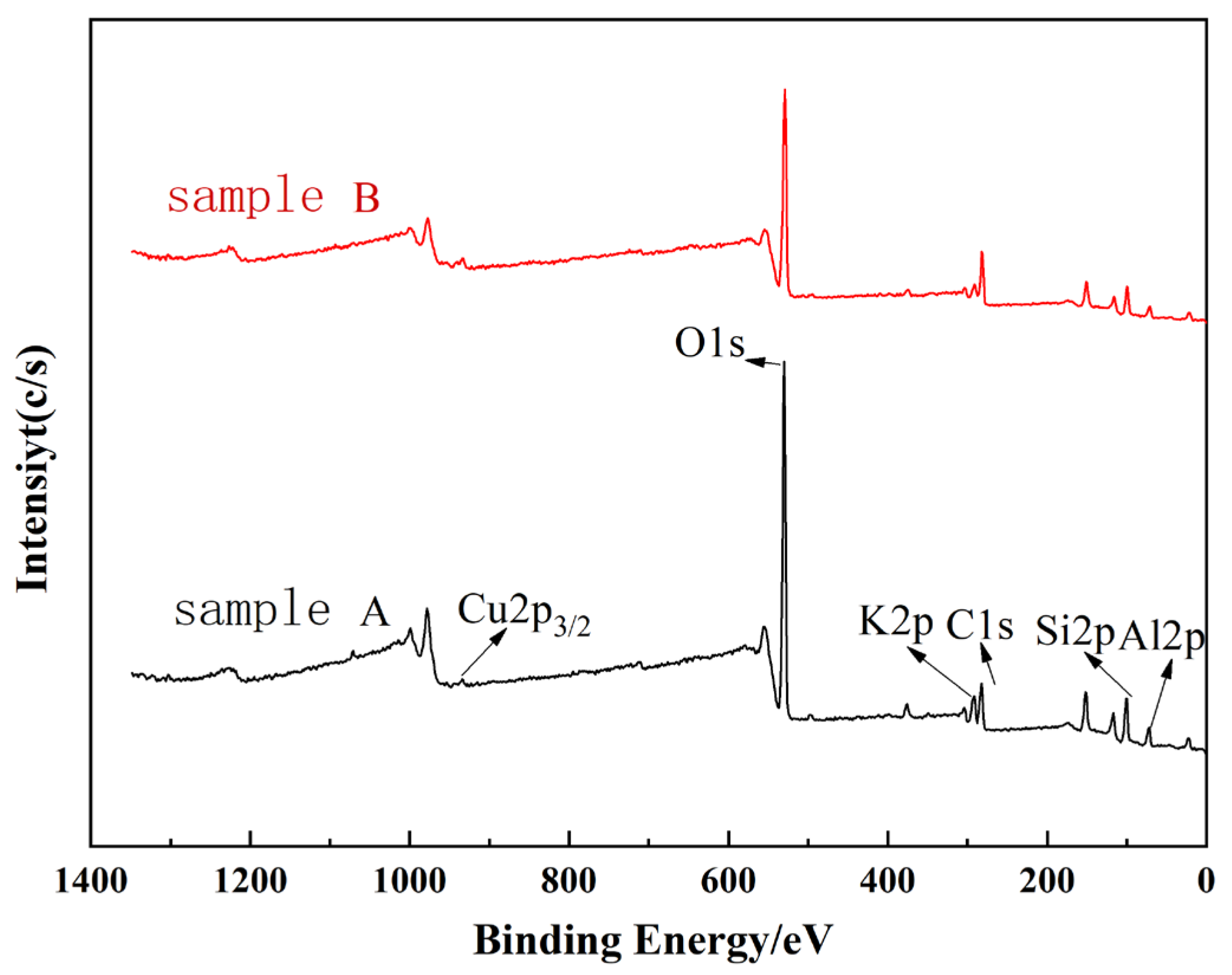
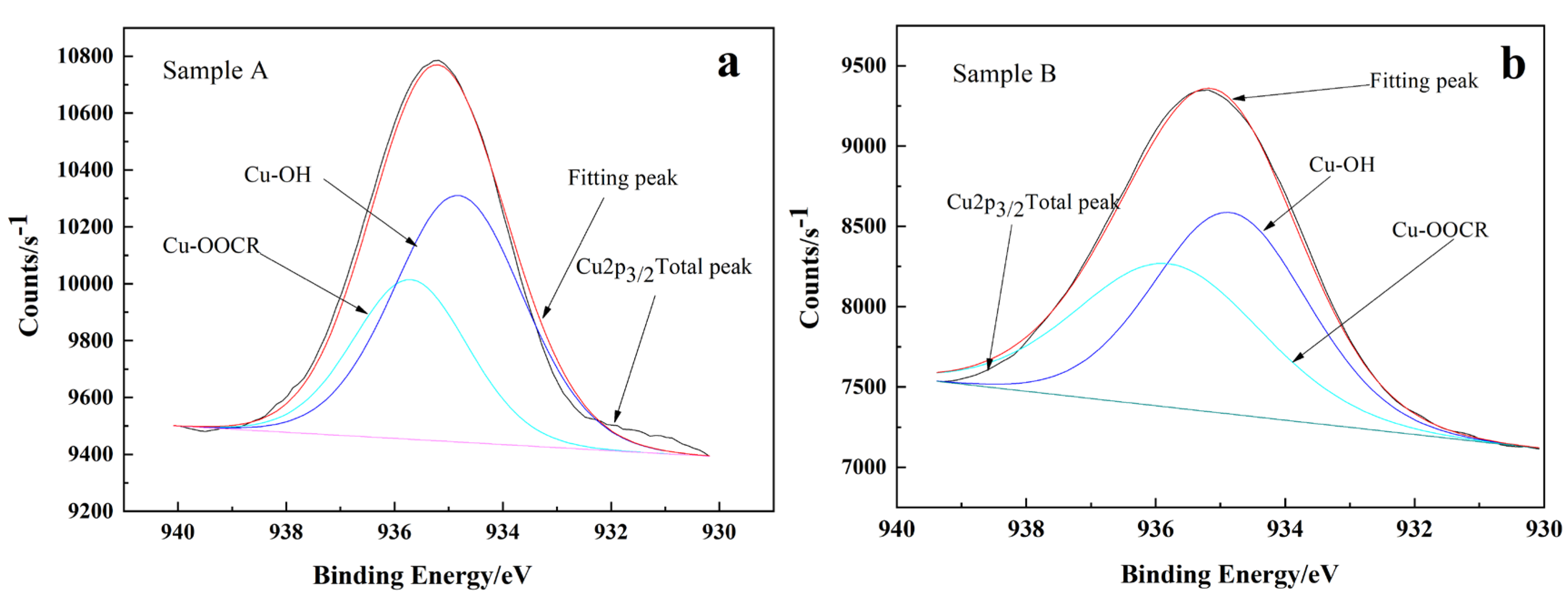
| Chemical Constituents | SiO2 | Na2O | Al2O3 | K2O |
|---|---|---|---|---|
| Composition content/(wt)% | 48.16 | 0.72 | 32.50 | 10.62 |
| Test Number | Electrochemical Pretreatment Conditions | |||
|---|---|---|---|---|
| Electric Current Magnitude/A | Electrolysis Time/min | PLATE DISTANCE/cm | Electrode Material Types (Anode–Cathodic) | |
| a | variable | 5 | 4.5 | graphite plate–graphite plate |
| b | 0.1 | variable | 4.5 | copper plate–graphite plate |
| c | 0.1 | 5 | variable | lead board–graphite plate |
| d | 0.1 | 5 | 4.5 | variable |
| Sample Numbers | Reagent Concentration/mol/L | Electrochemical Pretreatment Conditions | ||||
|---|---|---|---|---|---|---|
| Sodium Oleate | Cu2+ | Electrolysis Current/A | Electrolysis Time/min | Plate Distance/cm | Electrode Material Types (Anode–Cathodic) | |
| A | 9.20 × 10−4 | 6 × 10−5 | — | — | — | — |
| B | 9.20 × 10−4 | 6 × 10−5 | 0.1 | 5 | 4.5 | graphite plate–graphite plate |
| C | 9.20 × 10−4 | 6 × 10−5 | 0.2 | 5 | 4.5 | graphite plate–graphite plate |
| D | 9.20 × 10−4 | 6 × 10−5 | 0.1 | 15 | 4.5 | graphite plate–graphite plate |
| Sample Numbers | C/(wt)% | Cu/(wt)% | Cu2p3/2/eV |
|---|---|---|---|
| A | 19.54 | 0.57 | 934.07 |
| B | 30.80 | 0.91 | 933.28 |
| Sample Numbers | Total Peak Area | Cu-OOCR Peak Area | Cu-OH Peak Area | Cu-OOCR Relative Content/% | Cu-OH Relative Content/% |
|---|---|---|---|---|---|
| A | 4166.69 | 1518.25 | 2648.44 | 36.44 | 63.56 |
| B | 6820.16 | 3205.89 | 3614.27 | 47.01 | 52.99 |
© 2020 by the authors. Licensee MDPI, Basel, Switzerland. This article is an open access article distributed under the terms and conditions of the Creative Commons Attribution (CC BY) license (http://creativecommons.org/licenses/by/4.0/).
Share and Cite
Wang, Y.; Wang, Y.; Xiao, W.; Wei, Y.; Li, S. Effect of Cu2+ on the Activation to Muscovite Using Electrochemical Pretreatment. Minerals 2020, 10, 206. https://doi.org/10.3390/min10030206
Wang Y, Wang Y, Xiao W, Wei Y, Li S. Effect of Cu2+ on the Activation to Muscovite Using Electrochemical Pretreatment. Minerals. 2020; 10(3):206. https://doi.org/10.3390/min10030206
Chicago/Turabian StyleWang, Yubin, Yan Wang, Wei Xiao, Yaru Wei, and Shuqin Li. 2020. "Effect of Cu2+ on the Activation to Muscovite Using Electrochemical Pretreatment" Minerals 10, no. 3: 206. https://doi.org/10.3390/min10030206
APA StyleWang, Y., Wang, Y., Xiao, W., Wei, Y., & Li, S. (2020). Effect of Cu2+ on the Activation to Muscovite Using Electrochemical Pretreatment. Minerals, 10(3), 206. https://doi.org/10.3390/min10030206






